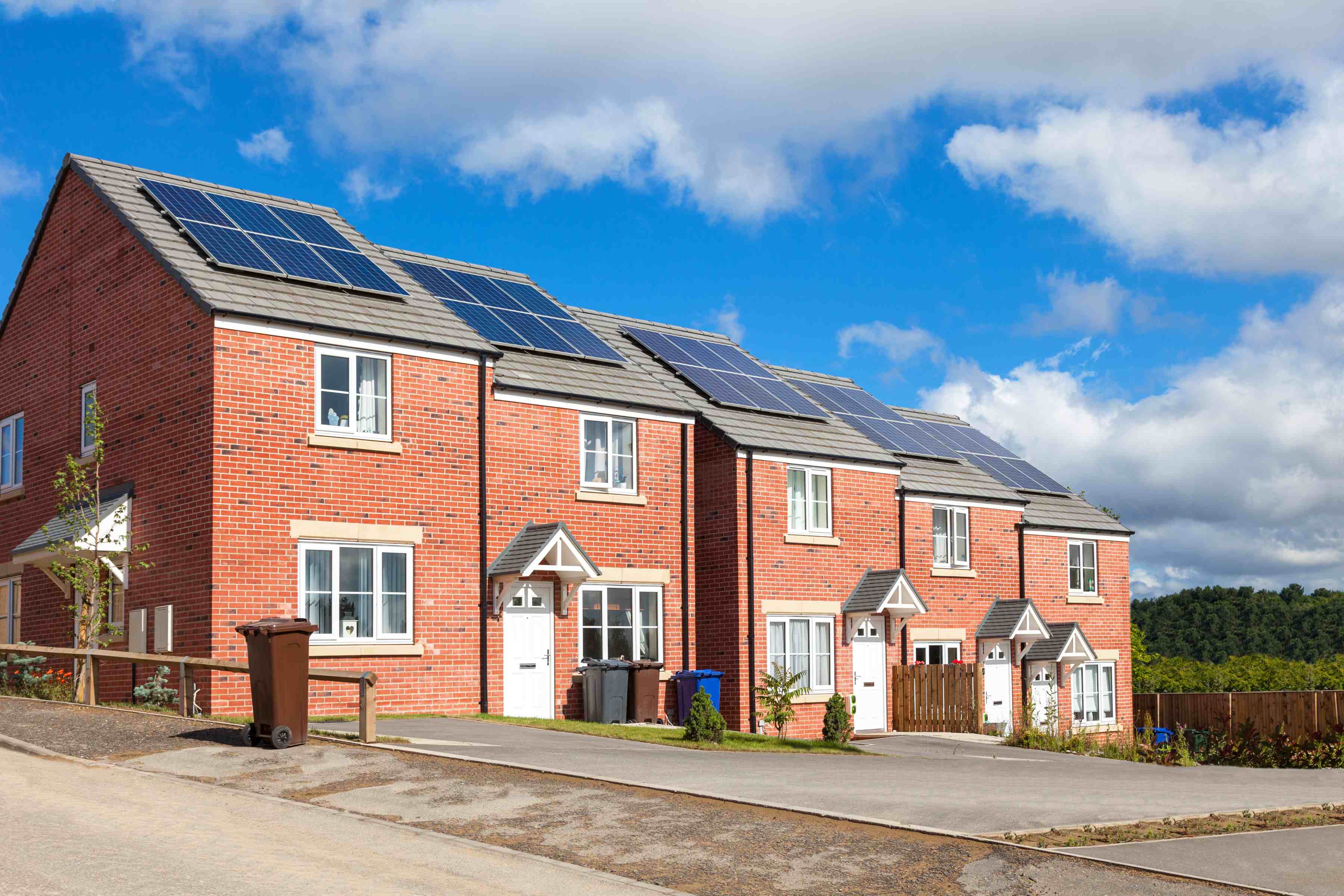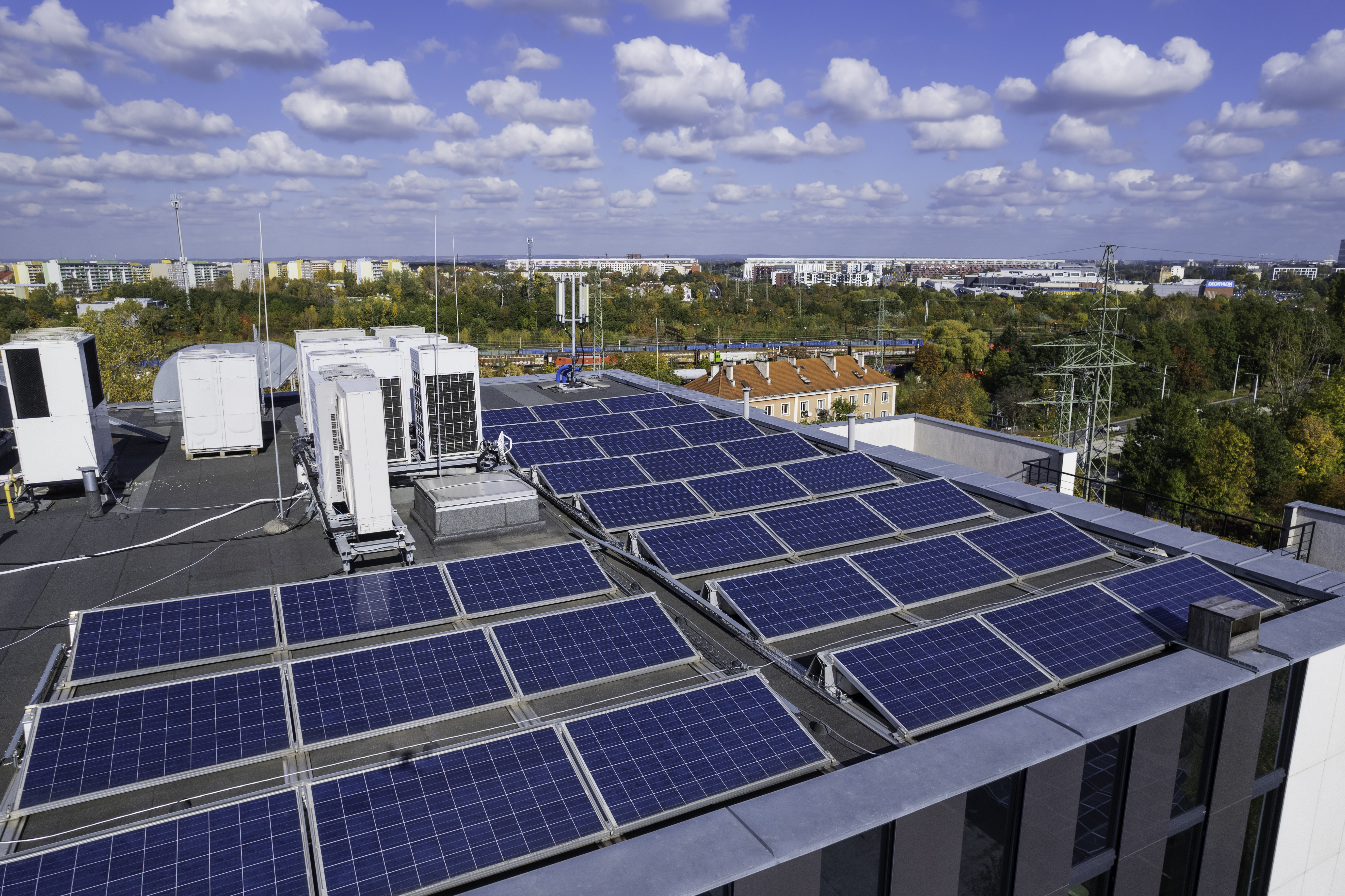How will installing solar panels affect my home?

There’s plenty to think about before you install a PV system. But what happens once it’s on your roof? Here’s our overview of what life with a PV system is like. It covers things you should bear in mind while the system is generating, and what happens when the panels reach end-of-life.
Will having PV panels improve the value of my building?
This is a very common question – and can be important to know if you think you might move before you get a complete return on your investment. Unfortunately, it is unlikely that your investment will be reflected in the value of your building. According to Which? two-thirds of estate agents don’t think solar panels affect the value of your home. However, this trend could be changing – a more recent study in the US states that as the benefits of solar become better known, homes with solar become more desirable.
What maintenance does solar PV need?
If you’re worried about how much maintenance your solar panels need, fear not! Solar is a very low-maintenance technology. It is also easy to check if there is a problem – your solar system should have a display showing you how much electricity you’re generating, and if this is below what you normally see, then there could be a problem.
Pitched panels are generally considered self-cleaning, meaning the rain that falls on them should wash off any dirt. But if there is an extended dry spell they may need to be cleaned. If your panels are particularly prone to accumulating dirt – for example, if you have several trees dropping leaves on them – they may require more regular cleaning. Cleaning can be accomplished with as little as a leaf blower or garden hose. Always check with the manufacturer for advice, and to prevent voiding your warranty. It is generally recommended that you check the cleanliness of your panels once a year – about the same rate you should clean your gutters.
Panels are also generally hardwearing – they are designed to withstand all weather conditions, including hail. Installations in the US even survive hurricanes! If your panels do get damaged, this should fall under the warranty – meaning they will be repaired or replaced without you paying. This is one of the reasons it is essential to check your warranty before purchasing.
As there are no moving parts, there is very little to go wrong with solar panels. The most common issue is the failure of the inverter. These generally have shorter lifetimes than the panels themselves lasting about 10 years. These often cost around £1000 to replace. Otherwise, your panels should not need repair or replacement for 20 years or more.
What's the impact of solar PV on the roof?
The most significant worry is that solar panels may increase damage to your roof. This is largely a non-issue so long as you pick a reputable installer (there is some more information in this guide). The system should be designed specifically for your roof to prevent any damage from the extra weight. The wind blowing on the panels does increase the strain – but this should also be accounted for by your installer. Holes do need to be drilled in a pitched roof to mount the panels but this will not weaken your roof. Reputable installers will also properly seal these holes preventing any leaks.
It is worth making sure your roof is in good condition before installing panels. In the unlikely event that your roof gets damaged with solar panels installed, it is harder to repair. This is because the panels will need to be removed to repair the roof, before being replaced. This is likely not covered by your panels’ warranty.
What are the differences in solar PV generation across the day, year, and their lifetime?
It is worth noting that the generation of your solar panels is not constant. It may be obvious that they will only generate during the day – but the amount of electricity also varies through the day. The panels will begin generating a small amount of electricity as the sun starts to rise, this will increase to a maximum around midday, and decrease towards sunset. This variation may mean you have to plan the time of day you use different appliances in the home to get the most out of your panels – see this guide for tips.
Generation also varies throughout the year. In summer, the sun is up for a significant period of the day and you will generate more electricity than in winter when there are fewer daylight hours. The sun is also lower in winter, which lengthens shadows. This can make shading issues worse and can create shading where it doesn’t exist in summer. Weather can also impact the amount of electricity you generate. Cloud, rain and fog can all reduce the sunlight getting to your panels, meaning they generate less. In summer your panels can get hot and if they get too hot, they will generate less electricity.
Finally, panels ‘degrade’ over their lifetime – they become slightly less efficient as they get older. Most panel warranties guarantee panels will remain over 80% efficient over the warranty period (normally around 15-25 years). Normally panels remain far more efficient than this - in moderate climates such as the UK, panels tend to retain 96% of their original capability after 20 years.
Decommissioning and recycling your solar PV panels
Unfortunately, solar panels do not last forever. Most manufacturers offer long guarantees often of 15-25 years, although panels often last even longer than that. Eventually, your panels will “break down”. Normally this will be because they have degraded and their power output declines over time. When they do so (or if they break for any other reason) they need to be replaced. But what happens to the old panels?
PV panels are classed as e-waste under the Waste Electrical and Electronic Equipment (WEEE) Directive. In short, this means they must be disposed of in a safe and specific way – much the same way you would have to recycle your batteries rather than just throw them away. All solar panel manufacturers are responsible for the waste of their products. This means that they must collect your panels for recycling when they reach end-of-life. If you contact your installer, they should give you the details of what to do. Commonly, the installer will collect your panels and take them to a dedicated collection facility – somewhere set up to collect panels before passing them to a recycler. It’s worth keeping an eye on this – WEEE is derived from EU law, which is subject to change since Brexit.
Thankfully, solar panels are easily recyclable. Panels can be broken down, and almost all the materials reused. As recycling practices improve (and solar panel-specific recycling centres are established) this could rise to complete reusability. This infographic from GreenMatch gives an overview of the recycling process, and what materials are reused.
Carbon emissions and your Solar PV
Solar panels offset your use of grid electricity meaning they reduce your carbon footprint. But many people worry about the balance between the ‘embodied emissions’ – the carbon emissions in making and installing solar panels – and the carbon savings. This ‘carbon payback’ is dependent on lots of variable factors. The embodied emissions of an installation are very variable because it is affected by panel type, manufacturer, inverter, and many other factors. The carbon savings achieved when compared to grid electricity are also variable – linked to the type of system, its performance, and the carbon emissions associated with grid electricity which changes over time. Nonetheless it is generally agreed that solar PV panels more than ‘pay back’ their embodied carbon within their lifespan. More importantly, the embodied emissions per unit of electricity generated by solar are currently significantly lower than the embodied emissions of electricity from the national grid.
Solar offers one of the lowest carbon forms of electricity generation available, and it is getting better all the time. So be assured that solar panels are a good way to reduce your environmental impact.





